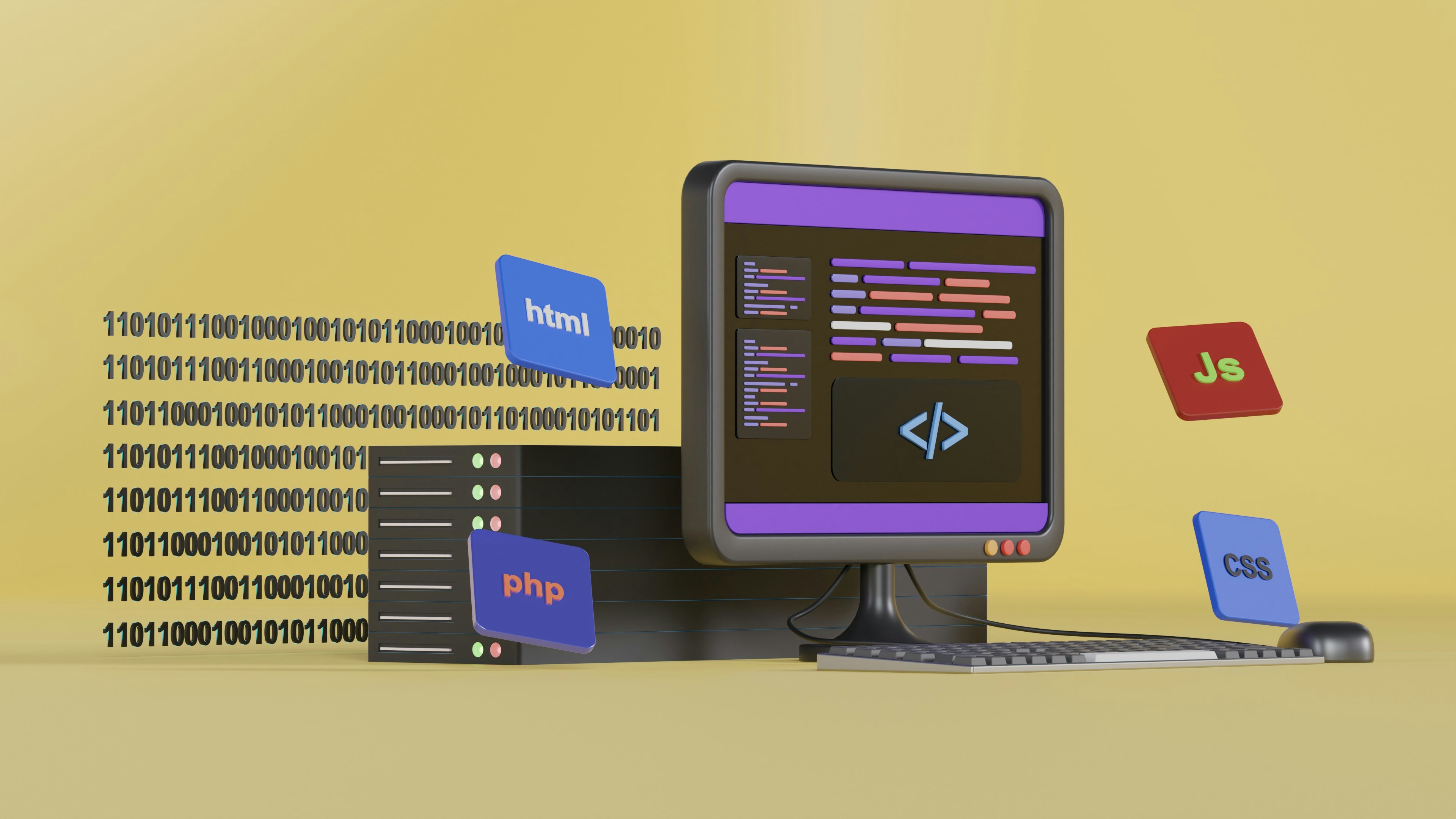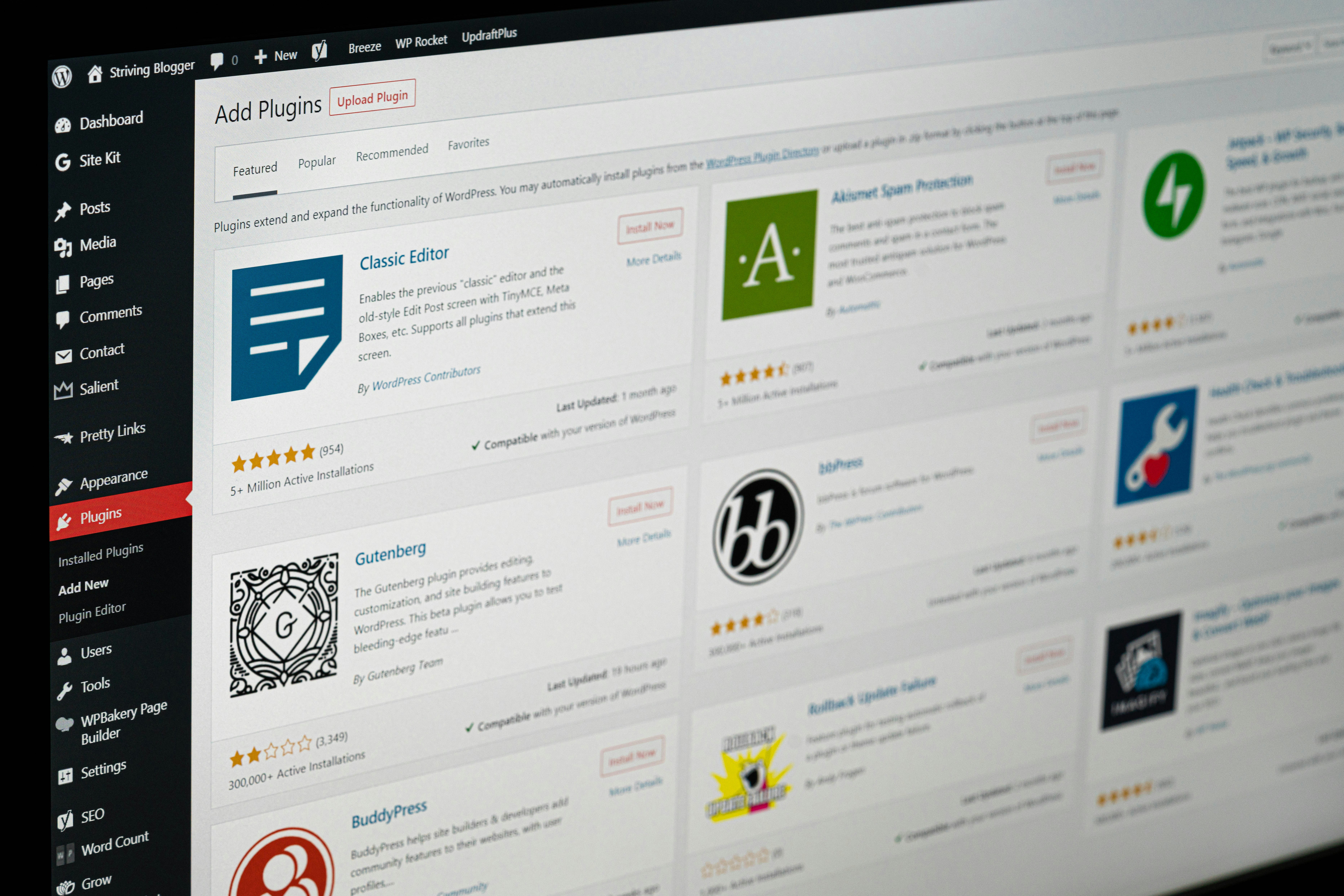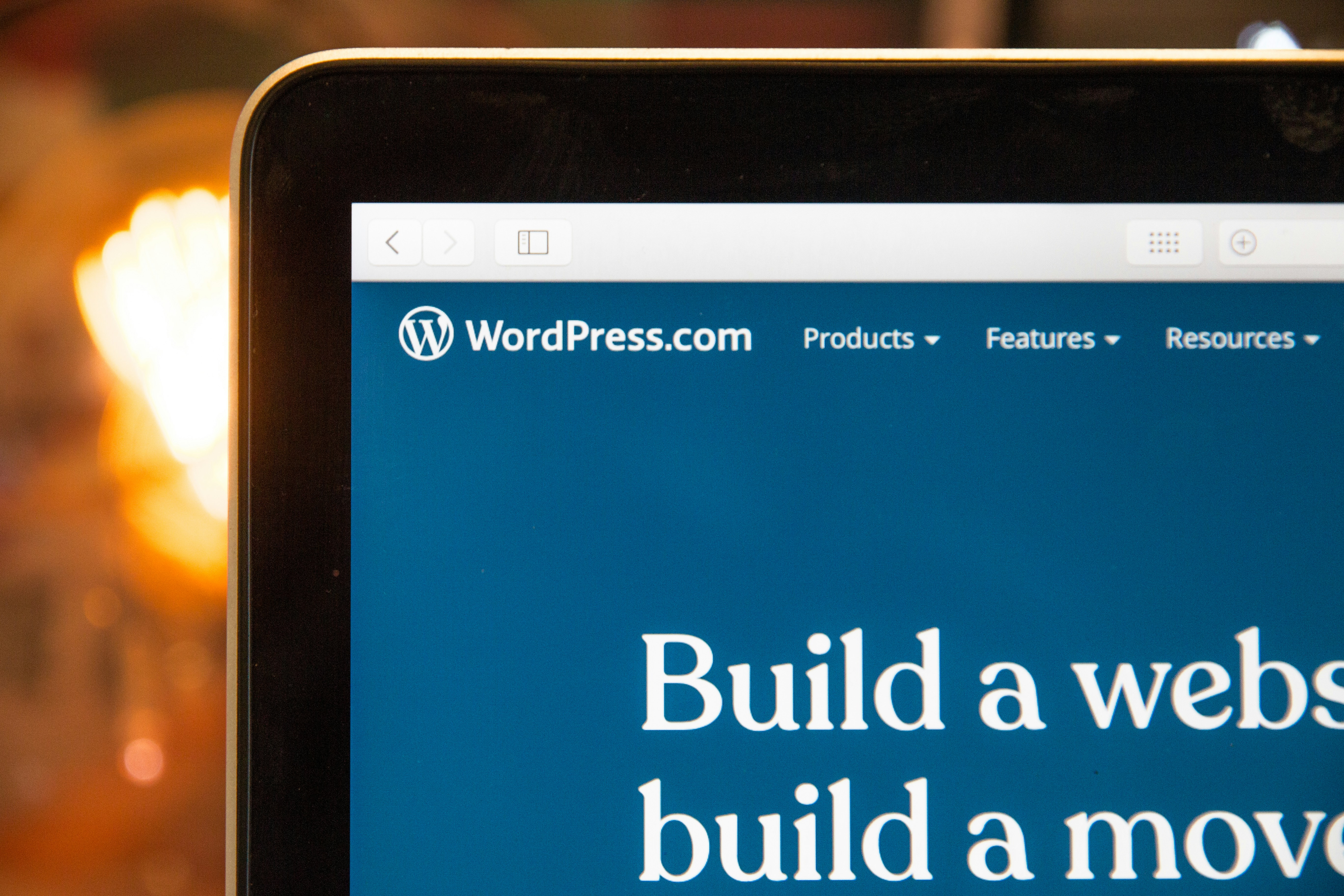Building an impactful website is crucial for nonprofits to connect with advocates, donors, and communities. But choosing the right nonprofit website builder can be challenging.
Whether you're raising awareness, managing events, or launching campaigns, the right platform can simplify the process and boost your outreach.

This guide will walk you through everything you need to know about nonprofit website builders in 2025, from what they are to how to choose the best option for your organization.
What is a NonProfit Website Builder?
Definition and Purpose
A nonprofit website builder is a platform designed to help organizations create functional and professional websites without requiring web development skills.
These builders are tailored to the unique needs of nonprofits, offering donation processing tool, event management tools, and mobile-optimized templates etc.
Unlike generic website platforms, nonprofit-specific builders empower organizations to expand their mission, engage audiences, and grow their support base efficiently.
Why Nonprofits Need Specialized Website Builders
Nonprofits face unique challenges, such as fundraising constraints and managing donor relationships. Specialized website builders streamline these needs by integrating features like:
● Donation tools for one-time or recurring gifts.
● Event registration to organize and promote community events.
● Custom templates designed to reflect mission-driven branding.
These purpose-built features not only save time but are also cost-effective, allowing nonprofits to focus on their mission rather than tech complexities.
Key Differences from Standard Website Builders
Unlike standard platforms, nonprofit website builders include:
● Integrated fundraising tools.
● Advanced audience engagement features like CRM integration.
● Options for nonprofit discounts, reducing operational costs.
● Enhanced support for accessibility and mobile-optimized designs.
By addressing the unique needs of nonprofit organizations, these builders make it easier to achieve strategic goals.
What to Look for in a Nonprofit Website Builder
Built-In Donation Tools
An effective nonprofit website builder should streamline online giving. Look for tools that:
● Accept one-time and recurring donations.
● Allow donors to cover transaction fees.
● Provide real-time recognition of contributions to inspire others.
Mobile Responsiveness
With more users browsing on smartphones, mobile optimization is non-negotiable. A good website builder ensures:
● Responsive designs that look great on all devices.
● Seamless donor experiences across platforms.
SEO and Marketing Features
To maximize visibility, your website should be equipped with:
● SEO tools for higher search rankings.
● Integration with email marketing and social media platforms.
● Analytics to track user engagement and measure campaign success.
Nonprofit Discounts and Pricing
Many platforms offer nonprofit-specific incentives, such as:
● Reduced subscription costs.
● Waived or discounted transaction fees.
● Free additional features to enhance functionality.
User-Friendly Design and Support
Ease of use is critical. Choose a platform that enables non-technical staff to:
● Customize templates with drag-and-drop tools.
● Access live support or tutorials in case of issues.
● Automate processes like email outreach and membership management.
Learn more: Top AI Cloud Business Management Platform Tools You Need
Best Website Builder for Nonprofits

1. Wix
Best for All-Around Use
Wix offers a balance between usability, features, and design flexibility, making it a solid choice for nonprofits of all sizes. Its drag-and-drop editor and ready-to-use templates dedicated to nonprofits make building a website a breeze. Key features include:
● Donation Tools: Easily add donation buttons using Wix's AppMarket tools like Get Funding, which integrates with PayPal.
● Customizable Templates: Choose from 15+ nonprofit templates tailored for organizations like animal shelters, environmental groups, and community initiatives.
● Discounts: Eligible nonprofits can enjoy a 70% discount when signing up through TechSoup in select countries.
For organizations seeking an affordable yet feature-rich solution, Wix delivers everything you need to communicate your mission effectively.
2. Squarespace
Best for Sleek Design and Branding
Known for its visually stunning templates, Squarespace is perfect for nonprofits focused on storytelling and aesthetics. Key features include:
● Donation functionality through built-in payment processors like Stripe and PayPal.
● 38 nonprofit templates that highlight clean, minimalist designs.
● Integrated blogging tools for keeping supporters informed.
While Squarespace doesn’t offer nonprofit discounts, its intuitive editor and polished designs make it a popular choice for branding-focused organizations.
3. Webnode
Best for Multilingual Websites
Organizations with a global reach will appreciate Webnode's multilingual capabilities, ideal for nonprofits serving diverse communities. Highlights include:
● Fast and straightforward setup for multiple language versions of your site.
● Affordable pricing, starting at just $8.50/month for ad-free websites.
● A free 1-year premium plan for eligible nonprofits.
While features like donation tracking are less robust than other platforms, Webnode’s multilingual support is unmatched for organizations with international missions.
4. WordPress

Best for Customization and Scalability
WordPress remains the go-to platform for nonprofits seeking limitless customization and scalability. Choose between WordPress.com (hosted) or WordPress.org (self-hosted) for your website, depending on your needs. Why WordPress works:
● Plugins: Access powerful tools like GiveWP for donations, Events Calendar for event management, and Yoast SEO for optimizing visibility.
● Template Variety: Thousands of nonprofit-specific themes from sources like Themeforest make it easy to find the perfect look.
● Flexibility to grow your site as your nonprofit expands.
While WordPress offers unparalleled control, it does require more technical expertise compared to drag-and-drop builders like Wix.
5. Shopify
Best for Ecommerce-Focused Nonprofits
Shopify , though traditionally ecommerce-focused, is also ideal for nonprofits looking to sell merchandise or create efficient donation systems. Features include:
● NPO Lite and NPO Full plans, tailored specifically for nonprofits, with reduced transaction fees.
● Built-in tools for tracking donor activity and managing inventory.
Although Shopify’s pricing may not suit very small nonprofits, its tools for fundraising and merchandise sales make it a top contender for larger organizations.
6. Webflow
Best for Design-Savvy Nonprofits
Webflow combines a website builder with a CMS, giving nonprofits design flexibility and control. It’s perfect for tech-savvy teams or those working with designers. Features include:
● Stunning nonprofit templates that set organizations apart visually.
● Advanced integrations for managing interactions and SEO.
While Webflow can be intimidating for beginners, it offers comprehensive tools for nonprofits looking to create highly polished and unique websites.
Best Free Website Builder for Nonprofits
1. Webnode
The Best Free Option for Multilingual Nonprofits
Webnode stands out for its ease of use and multilingual capabilities, making it an excellent option for nonprofits serving diverse communities.
Key Features:
● Multilingual Sites: Quickly create content in multiple languages to connect with global audiences.
● Free Plan: Includes an ad-free site with basic customization options.
● PayPal Integration: Add donation buttons to accept contributions online.
● Templates for Nonprofits: Choose from templates tailored for animal shelters, education initiatives, and community organizations.
Webnode also offers a free premium plan for eligible nonprofits, providing added value for organizations on tight budgets. However, its features for donation tracking and advanced customization are less robust than some competitors.
2. Weebly
Great for Simplicity and Event Management
Weebly is ideal for nonprofits looking to create simple, clean websites with essential features like event scheduling.
Key Features:
● Drag-and-Drop Design: Customize your site easily, even with no technical experience.
● Event Calendars: Manage and promote events directly on your website.
● Basic Free Plan: Comes with a Weebly-branded domain and minimal storage.
● Ecommerce Capabilities: Sell merchandise or tickets to help fundraise for your cause.
While the free plan includes ads and limits, Weebly’s straightforward editor and event tools make it a solid entry-level choice.
3. Jimdo
Best for Quick and Easy Setup
If you need to get a website up and running in minutes, Jimdo is the answer. Its AI-powered website builder simplifies the process, making it easy for nonprofits with minimal resources.
Key Features:
● Speed and Simplicity: Build a site in minutes using Jimdo’s AI Assistant.
● Donation Options: Accept donations via PayPal or embed third-party fundraising tools like Fundly.
● Customizable Templates: Choose from clean, professional templates designed for small nonprofits.
While Jimdo's free plan lacks advanced features like multilingual support or built-in event calendars, its ease of use makes it a strong option for organizations seeking a quick, no-fuss solution.
4. Strikingly
Effective for Small, Simple Nonprofit Websites
Strikingly is known for its single-page designs, which work well for smaller nonprofits with straightforward needs.
Key Features:
● One-Page Sites: Create high-impact websites with focused messaging.
● 24/7 Support: Access help via their friendly “Happiness Officers.”
● Free Plan with Customizable Templates: Establish a simple yet polished online presence.
Strikingly offers a nonprofit discount for its paid plans but also provides plenty of features in its free version. However, organizations needing complex site maps or advanced tools may find it limiting.
5. Wix (Limited Free Plan)
Best for Design Flexibility
While Wix's free plan is limited compared to its paid options, it remains a reasonable choice for nonprofits experimenting with website design.
Key Features:
● Visual Editor: Drag-and-drop tools for intuitive customization.
● Nonprofit Templates: Access templates suited for NGOs, community events, and more.
● Basic Free Plan: Includes Wix branding and limited storage.
Nonprofits that outgrow Wix’s free plan can easily upgrade to take advantage of its advanced donation tools and features.
How to Build a Nonprofit Website on WordPress

Choosing the Right WordPress Plan
Start by deciding between:
● WordPress.com for convenience and maintenance-free hosting.
● Self-hosted WordPress.org, which provides full customization and is often more cost-effective.
Installing a Nonprofit-Focused Theme
Choose themes designed for mission-driven organizations. Options like Astra Nonprofit or Charity Pro offer integrated donation and event features.
Essential Plugins for Fundraising and Events
Install plugins like:
● GiveWP or Charitable for donations.
● Events Calendar for managing events.
● Yoast SEO for search optimization.
Page Setup and Customization
Focus on key pages:
● Home to highlight your mission.
● About to build trust with your audience.
● Donate with a clear call-to-action and secure payment gateways.
● Contact to make it easy for donors or volunteers to connect.
Maintenance Tips and Best Practices
Regularly update plugins, review analytics, and refresh content to keep your website functional and engaging.
How Much Does It Cost to Build a Nonprofit Website?

Domain and Hosting Costs
Expect to pay $12–$25 annually for domains and around $5–$20 monthly for basic hosting plans.
Website Builder Subscriptions
Subscription plans can range from free to $50+ monthly, depending on features and nonprofit discounts.
Premium Plugins and Features
Budget an additional $20–$100 per year for premium plugins like donation tools or advanced SEO features.
Design and Developer Costs
If hiring a professional, design services may cost $500–$5,000. Custom development adds another layer of expense, ranging from $1,000 to $10,000.
Typical Budget Breakdown for 2025
● Domain & Hosting: $60–$300 annually
● Builder Subscription: $100–$600 annually
●Plugins/Features: $50–$200 annually
●Design/Developer Work: $500–$5,000 (one-time)
How to Build a Nonprofit Website

A well-designed website is a game-changer for nonprofits. It serves as your digital headquarters for sharing your mission, connecting with supporters, and driving donations.
This step-by-step guide will walk you through the process of creating an effective nonprofit website. By following these actionable steps, you can build a site that amplifies your mission, attracts donors, and grows your community.
Step 1: Define Your Mission and Website Goals
Before you start building your website, take some time to define your nonprofit’s mission and what you want your website to accomplish. Ask yourself:
● What story are we trying to tell?
● What is the primary purpose of our website? (e.g., fundraising, raising awareness, recruiting volunteers)
● Who is our target audience?
● What features and functionalities do we need? (e.g., donation tools, event registration, or newsletters)
Clearly outlining your goals ensures every webpage, feature, and design decision aligns with your organization’s mission and engages your visitors meaningfully.
Pro Tips:
● Write down your mission statement and keep it at the forefront as you build your site.
● Survey your team or volunteers to gather ideas for the website’s design and features.
Step 2: Choose the Right Website Builder
The website builder you choose will shape your entire experience. For nonprofits, it’s important to pick a builder with built-in tools that simplify donation processing, event management, and SEO.
Recommended Website Builders for Nonprofits:
● Wix: Known for its user-friendly interface, nonprofit templates, and donation integrations like PayPal buttons.
● WordPress (self-hosted): Ideal for nonprofits that need extensive customization and powerful plugins for donations and events.
● Webnode: Great for global nonprofits, thanks to its multilingual capabilities.
● Hostinger (formerly Zyro): A simple tool for nonprofits on a budget.
What to Look For:
● Built-in donation tools for seamless online giving.
● Mobile-responsive templates to reach donors on all devices.
● Affordable plans or nonprofit discounts (many platforms offer these when verified through services like TechSoup).
Pro Tips:
● Use free trials to test website builders before committing to a subscription.
● If you’re unsure which platform to choose, go for one with robust customer support, like Wix or Squarespace.
Step 3: Set Up Domain and Hosting
Your domain name is your site’s web address (e.g., www.YourNonprofit.org), and hosting ensures your site is accessible online. Many website builders include domain registration and hosting in their packages, but you can also purchase these separately.
How to Choose Your Domain:
● Keep it short, memorable, and reflective of your mission.
● Use “.org” as it’s often associated with nonprofits.
Hosting Options:
● Choose free hosting for simplicity (offered by builders like Wix or Weebly).
● Opt for premium hosting if you’re using a platform like WordPress.org, which requires hosting through companies like Bluehost or SiteGround.
Pro Tips:
● Secure your domain early to prevent others from purchasing it.
● Look for nonprofit-specific hosting discounts when choosing a service.
Step 4: Design Core Pages (Home, About, Donate, Contact)
Now it’s time to create your website’s core pages. Each page should clearly convey your nonprofit’s message and direct visitors toward actions like donating or volunteering.
Essential Pages to Include:
● Home Page:
● Feature a compelling headline and a strong call-to-action (e.g., “Donate Now” or “Join Our Mission”).
● Use high-quality images and storytelling to captivate visitors.
● About Page:
● Share your mission, vision, and impact to build trust with potential donors.
● Highlight your team and showcase testimonials or success stories.
● Donate Page:
● Keep the donation process simple with secure online payment options.
● Offer choices for one-time or recurring donations.
● Contact Page:
● Include your address, phone number, email, and social media links.
● Add a contact form so visitors can reach you directly.
Pro Tips:
Use visuals like photos or videos to humanize your cause.
Add a newsletter sign-up section to build lasting connections with supporters.
Step 5: Optimize for SEO and Mobile
Search engine optimization (SEO) helps people find your website online, while mobile optimization ensures your site works smoothly on smartphones and tablets. Both are essential for building a wider audience.
SEO Tips:
● Use keywords relevant to your cause (e.g., “affordable housing nonprofit” or “environmental NGO”).
● Write meta titles and descriptions for every page.
● Add alt text to all images for accessibility and improved search visibility.
Mobile Optimization:
● Make sure fonts, buttons, and images adapt to smaller screens.
● Test your site on various devices before launching.
Pro Tools:
● Platforms like WordPress offer plugins like Yoast SEO to streamline optimization.
● Many website builders, such as Wix, include built-in mobile previews to ensure flawless designs on smartphones.
Step 6: Launch and Promote Your Site
Once your site is polished and functional, it’s time to launch! But don’t stop there; promoting your site is essential to drive traffic and grow your audience.
Promotion Ideas:
● Announce your website launch via email marketing and social media.
● Host a virtual or in-person event to celebrate and increase engagement.
● Use paid ads or Google’s nonprofit ad grants to promote your site.
Pro Tips:
● Send personalized thank-you emails to donors and supporters after your site launch.
● Add sharable fundraising campaigns on your site to encourage collective giving efforts.
Step 7: Work with New Web Order for Expert Nonprofit Website Development
If you lack the time or resources to create your website, consider working with professionals. New Web Order specializes in building custom websites for nonprofits, with features like:
● Donation portals and event management tools.
● Expert SEO optimization for better visibility.
● Mobile-responsive designs tailored for mission-driven organizations.
Partnering with experts can save time while ensuring your site is polished, efficient, and impactful.
Final Thoughts
Investing in the right nonprofit website builder is essential to achieving your mission in 2025 and beyond. Evaluate your organization’s needs, explore your options, and leverage platforms that align with your goals.
To optimize your impact, consider partnering with experts for a seamless, customized website-building experience.
Ready to start? Contact us today and transform your vision into reality. Together, we’ll build a scalable, powerful digital presence that drives meaningful change.
FAQ for "Top NonProfit Website Builder for 2025"
1. What is a nonprofit website builder?
A nonprofit website builder is a platform that helps organizations create websites with tools tailored to their needs, like donation processing, event management, and mobile-friendly templates, without requiring technical expertise.
2. Why should nonprofits use specialized website builders?
These platforms are designed to address nonprofits’ unique needs, offering features like integrated fundraising tools, CRM capabilities, and affordable pricing options to save time and boost impact.
3. What features should I look for in a nonprofit website builder?
Key features include donation tools, mobile responsiveness, SEO integration, audience engagement tools like CRM, and affordable nonprofit pricing plans.
4. Are there free website builders for nonprofits?
Yes, platforms like Webnode, Weebly, and Strikingly offer free plans. However, these may include limitations like platform branding or fewer customization options.
5. How do I choose the right website builder for my nonprofit?
Start by defining your goals and required features, such as donation tools or multilingual support. Test free trials to find a platform that fits your budget and aligns with your mission.





